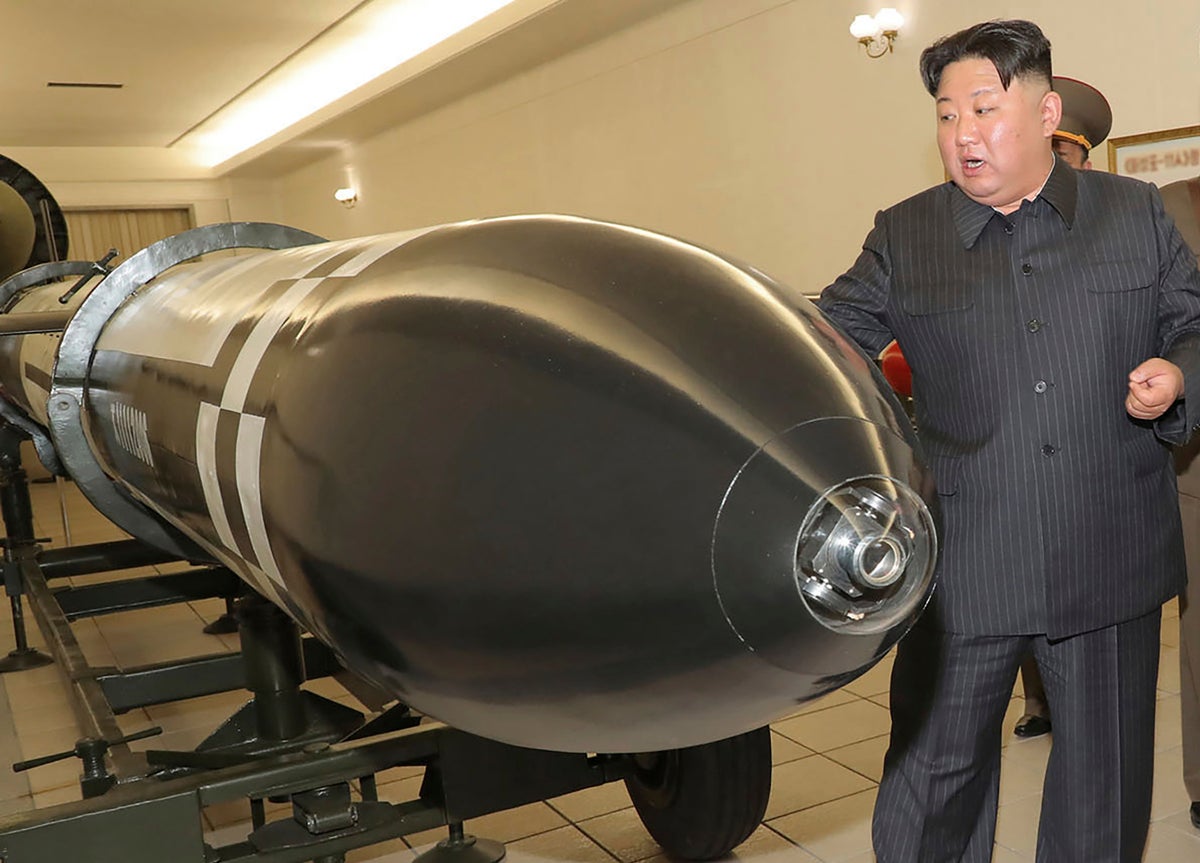
North Korean leader Kim Jong Un has called for his nuclear scientists to increase production of weapons-grade material to make bombs to put on his increasing range of weapons.
The report in state media Tuesday followed a series of missile launches — seven launch events in this month alone — and rising threats to use the weapons against his enemies. North Korea’s weapons tests and U.S.-South Korea military exercises have intensified in a tit-for-tat cycle, underscoring heightened tensions in the region.
Officials say North Korea could further up the ante in coming weeks or months with more provocative displays of its military nuclear program, possibly including its first test detonation of a nuclear device since September 2017.
The Korean Central News Agency said Kim during a meeting on Monday with officials and scientists at a state nuclear weapons institute stressed the need to ramp up bomb fuel production to meet his goals to expand his nuclear arsenal “exponentially,” and issued unspecified “important tasks” for his nuclear industry.
Kim also examined the country’s established plans for nuclear counterattacks as scientists briefed him on the North’s latest nuclear-capable weapons systems and progress in technologies for mounting nuclear warheads on missiles, the agency said.
The agency’s photos showed Kim talking with officials inside a hall that displayed what appeared to be various types of warheads – including around 10 khaki-green capsules with red tips and others that looked like a black-and-white cone with fins or a large torpedo.
A wall poster near one of the green devices described a warhead called “Hwasan-31,” based on the Korean word for volcano, and implied that it could fit on some of North Korea's short-range ballistic systems and cruise missiles. State media didn’t identify any of the devices in the photos.
Following six nuclear tests since 2006, North Korea likely has dozens of warheads that can probably be mounted on some of its older systems, like Scuds or Rodong missiles. But there are differing assessments on how far North Korea has come in miniaturizing and engineering those warheads so that they could fit on a variety of new weapons it developed at rapid pace in recent years, which may possibly require further technology upgrades or nuclear tests.
A biennial South Korean defense document released in February said North Korea is estimated to have 70 kilograms (154 pounds) of weapons-grade plutonium, which some observers say that’s enough for about 9-18 bombs. The document estimated that North Korea has “a considerable amount of” highly enriched uranium as well.
North Korea’s main nuclear complex in Yongbyon has facilities to produce both plutonium and highly enriched uranium, the two main bomb fuels used to build nuclear weapons. North Korea is believed to be operating at least one additional covert uranium enrichment facility, in addition to the one at its Yongbyon complex.
In separate reports, KCNA said the North again detonated mock warheads during tests of nuclear-capable missiles and a purported underwater attack drone this week. The reports came a day after neighboring militaries detected the North firing two short-range ballistic missiles toward waters off its eastern coast.
Monday's launches came hours before a nuclear-powered U.S. aircraft carrier and its battle group engaged in joint training with South Korean warships in waters near Jeju island, in the allies’ latest show of strength against the North’s rising threats. The USS Nimitz and the other warships pulled into the South Korean mainland port of Busan on Tuesday.
KCNA said the missiles tested Monday were tipped with mock nuclear warheads that detonated as intended 500 meters (16,40 feet) above their sea targets. A frontline unit fired the missiles as part of an exercise familiarizing the troops with executing nuclear attack orders, the agency said.
North Korea earlier said some of its ballistic and cruise missile tests this month involved mock nuclear warheads detonated above their targets, communicating that it could control the height above ground to maximize an explosion's potential damage.
KCNA also said North Korea this week conducted another test of a purported underwater nuclear attack drone capable of setting off a “radioactive tsunami” to destroy enemy naval vessels and ports. North Korea had not indicated it was seeking such a capability before announcing last week that a previous test conducted on similar conditions was successful.
Analysts, however, are skeptical whether such a device would be a meaningfully new threat, and South Korea’s Joint Chiefs of Staff said Monday it believes the North Korean claims regarding the weapon are likely “exaggerated or fabricated.”
Still, the drone underlines Kim’s commitment to spur the expansion of his nuclear arsenal as he seeks to force the United States to accept the North as a legitimate nuclear power and negotiate economic concessions from a position of strength.
North Korea already is coming off a record year in weapons testing, launching more than 70 missiles in 2022. It had set into law an escalatory nuclear doctrine that authorizes pre-emptive nuclear strikes in a broad range of scenarios where it may perceive its leadership as under threat.







